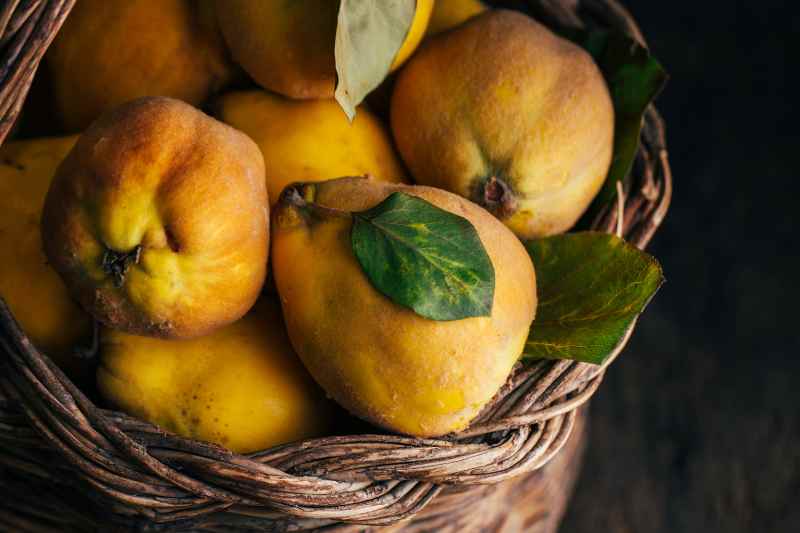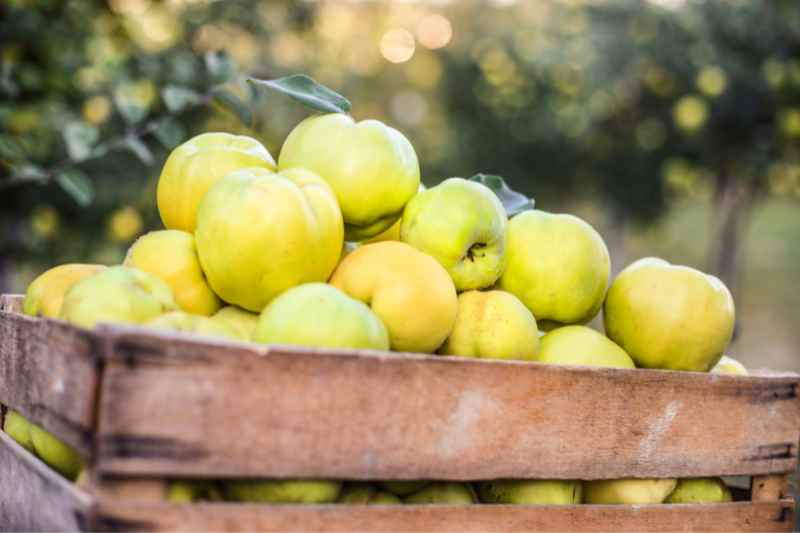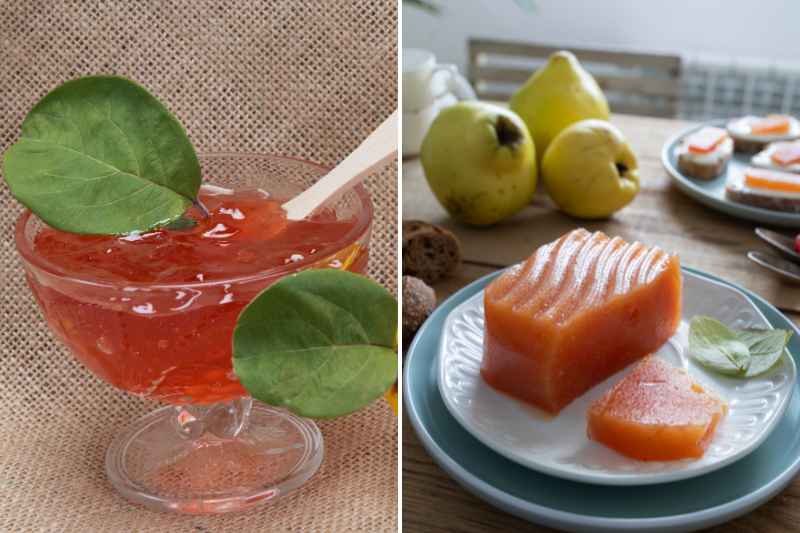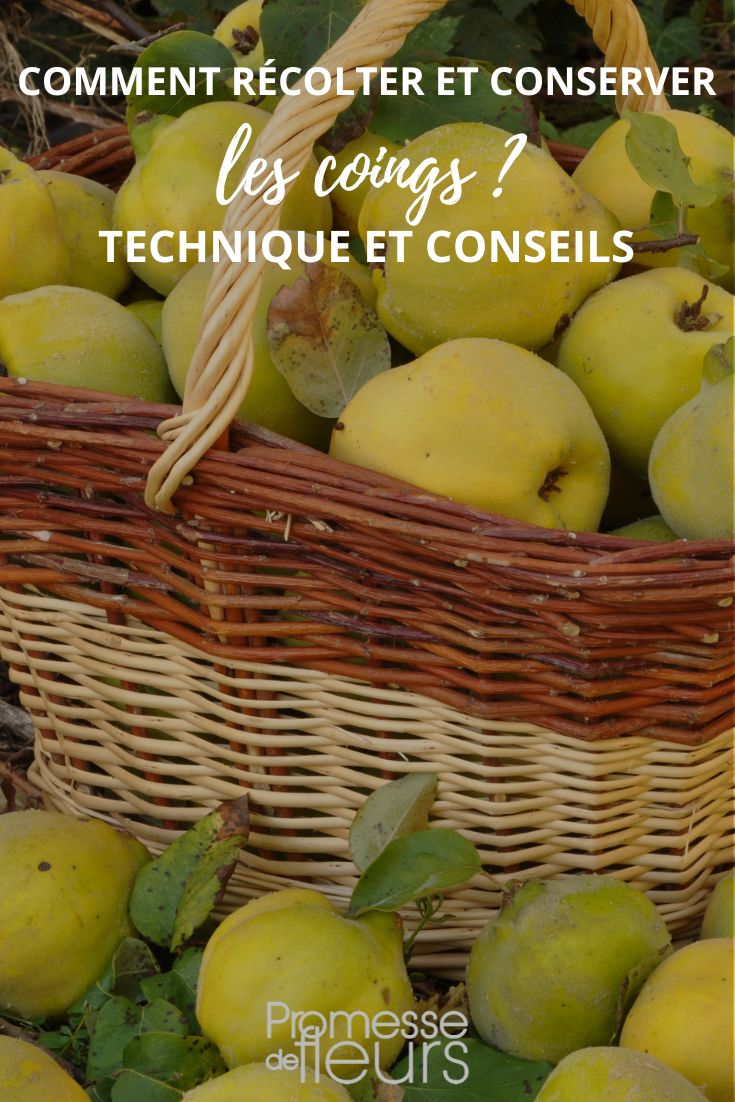Originating from the Mediterranean basin, the quince, the golden apple of the Garden of Hesperides, is believed to be the ancestor of the apple and pear. Indeed resembling a rough apple or pear, the quince has a rich flavour and a unique aroma. It is the oldest fruit known in the West.
Derived from the quince tree (Cydonia oblonga), this autumn fruit is one of those delights with a hint of nostalgia, taking us back to childhood with jams and fruit pastes or whisking us away to Morocco with sweet and savoury tagines. As production is often impressive on mature specimens, discover how to harvest and store your quinces to enjoy them for as long as possible!

Quince trees: characteristics and varietal interests
Among the various varieties of quince tree, here are some interesting selection criteria for harvesting and storing their fruits:
- the most productive: 'Champion', 'Le Bourgeault', 'Vranja', 'Leskovacz'
- the earliest: 'Du Portugal' (depending on the region, harvesting can begin as early as September), 'Champion' from October, and 'Le Bourgeaut' and 'Vranja' from mid-October
- the latest: 'Rea's Mammoth' (early November),
- the varieties that store best over time: the famous 'Monstrueux de Vranja', as well as 'Rea's Mammoth', along with 'Smyrna', 'Uspeech', and 'Leskovacz'
- the most disease-resistant: 'Champion' and 'Leskovacz' and Cydora robusta
When to harvest quinces?
It is not always easy to know when to harvest quinces. The bumpy, downy, very hard fruits do not provide a clear indication of ripeness.
Quinces are picked when they emit a subtle fragrance and their pruinose down rubs off, just before the first frosts, typically in October, or even November for some varieties. It is this very fruity aroma that signals the start of the harvest, confirming that they have reached ripeness! So much so that this intense fragrance was historically used in Provence to scent wardrobes…
Another good indicator that the fruits are ready to be picked is their change in colour to a bright, golden yellow. It is essential not to harvest quinces too early, as they will not ripen much once picked.

How to harvest quinces?
Despite the apparent toughness of the fruit, harvesting quinces requires delicacy and precision. Ideally, proceed on a dry day when it hasn't rained. First, examine the fruits to choose those that are firm and free from blemishes. Using pruning shears to cut the fruits rather than pulling them helps avoid damaging the branches and the fruits themselves. Handle the quinces carefully during harvesting and transport, as they are sensitive to bruising, which can compromise their quality and shelf life.
Be particularly careful not to pick any fruits that are blemished or contaminated by scab, which is often present on the quince tree (the fruits show brown spots): they will quickly become completely affected and must be discarded.
It is not uncommon for some ripe quinces to fall to the ground before harvesting. If you find quinces on the ground, examine them carefully; if the fruits are free from spots, bruises, or signs of rot, they can be picked. However, these fruits should be reserved for quick use, such as in compote, tart, or jam.

Storing and preserving quinces
Storing quinces is delicate, as the fruits can easily rot once picked. If some fruits are blemished, they will quickly contaminate the others.
Store them in a cool, dark place, protected from frost (a pantry, cellar, or any well-ventilated area to prevent potential mould). By storing them in wooden crates, in a single layer, you can keep them for up to two months. Do not mix them with other fruits, as quinces would impart their strong aroma to them.

Quinces are not eaten raw; they require long cooking to soften their very firm flesh and bitter taste. When confit as a vegetable in white meat tagines (with veal, chicken, or lamb), they are also delicious when incorporated into homemade apple compote, or candied with sugar as done in Turkey and the Middle East.
However, to preserve them even longer, and to take advantage of their high pectin content, nothing beats a quince jelly, which personally transports me back to my childhood at my grandmother's countryside home. Jams or compotes, stored in sterilised jars, can be used for up to a year.
You can also transform them into a delicious sweet-and-sour condiment like quince achard, or even homemade fruit pastes for those with a sweet tooth. They will then accompany a cheese platter or be enjoyed as a timeless treat (quince paste is part of the 13 Provençal desserts at Christmas in France). And if you enjoy liqueurs, take advantage of a good harvest to make quince ratafia... always to be consumed in moderation!

N.B.:
Freezing offers an additional option to enjoy your quince harvest throughout the year. This method is useful if you have a large harvest and want to preserve the quality of the fruits for later use. To freeze quinces, it is best to peel them, cut them into quarters, and remove the core. Then blanch them in boiling water to retain their colour and flavour. Once cooled, dry the quinces and place them on a baking tray in the freezer until firm. Then transfer the pieces to freezer bags, removing as much air as possible. Frozen quinces can be stored for up to a year and are perfect for compotes, tarts, or jellies.
To go further...
- Explore our range of quince trees in our online shop!
- Discover the specialty of Orléans, Cotignac, a quince fruit paste
- Prepare your quinces in various ways with the quince recipes from the Papilles et Pupilles French blog
































Comments